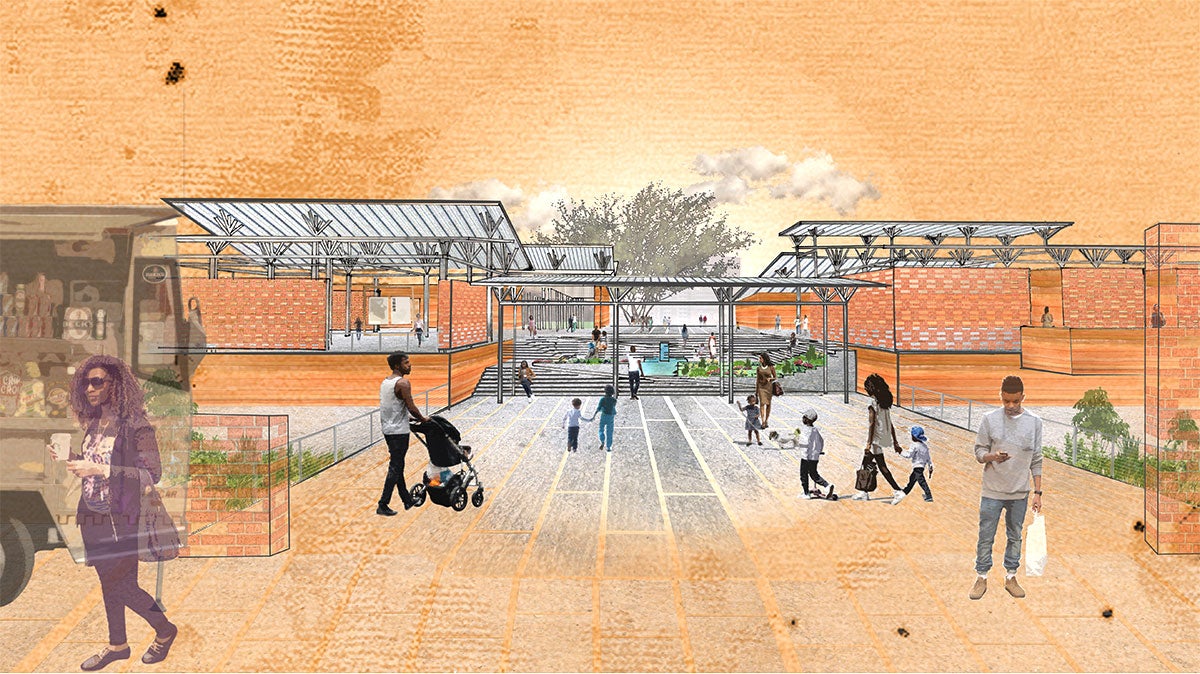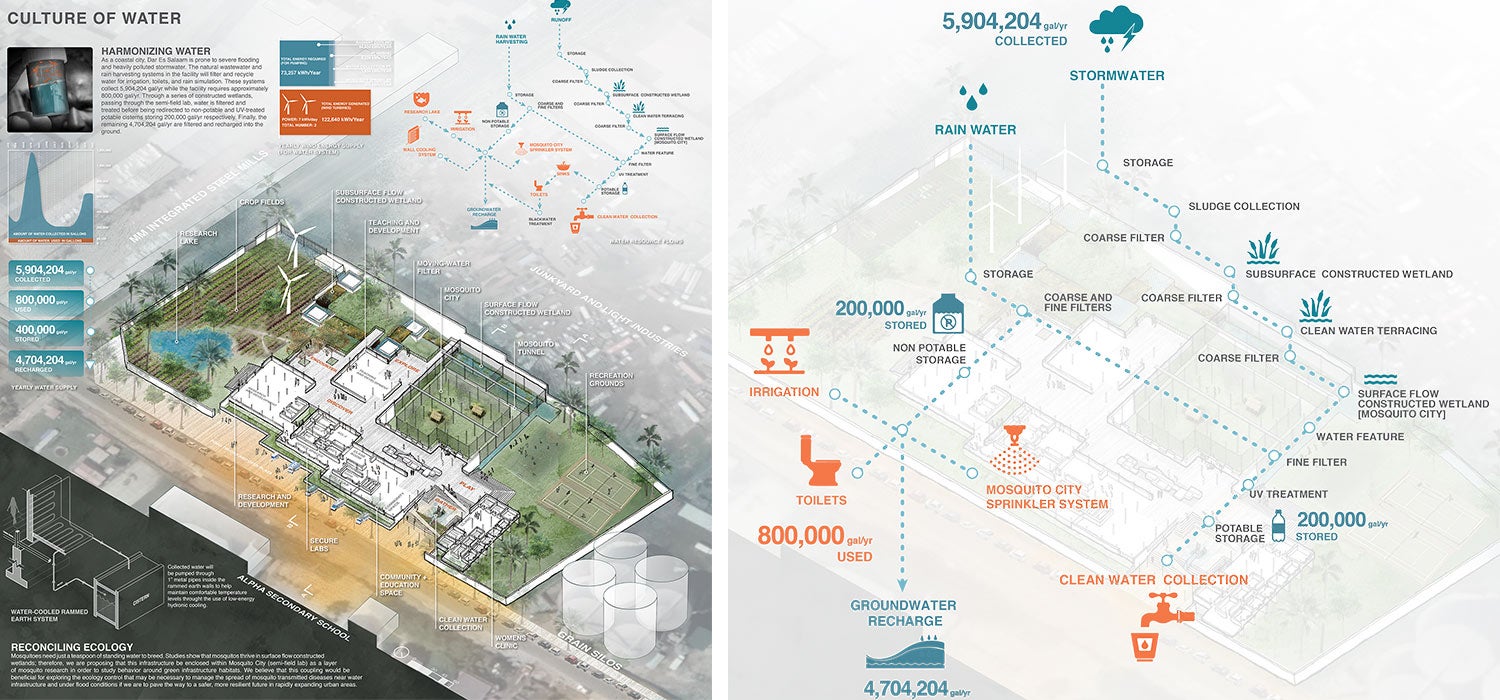 The student team's winning proposal for a mosquito research facility in Dar es Salaam, Tanzania
The student team's winning proposal for a mosquito research facility in Dar es Salaam, Tanzania
Mosquitos kill 445,000 people annually. With urbanization and climate change, the multiple epidemics caused by the insect are only growing. Three architecture graduate students— Sabrina Ortiz Luna (MArch, Track II), Elena Koepp (MArch, Track II), and Catherine Earley (MS in Architecture)—are trying to change that, and their work is generating buzz.
The Department of Architecture trio has won one of the prestigious 2019 AIA Committee on the Environment (COTE) Top Ten for Students awards for “Healing Habitats: Innovation Center for Disease and Water Management,” a plan for the 80,000-square-foot mosquito research facility in Dar es Salaam, Tanzania. The center researches mosquito-borne illnesses such as dengue, malaria, zika, and West Nile.
UO Portland Architecture Program Director and Professor Brook Muller led the team. It is the second year in a row one of his student teams has won the award. Earley, Koepp, and Ortiz Luna, started working on the project in Muller’s Protective Atmospheres Studio in Fall 2018.
“The lack of design thinking in mosquito research facilities is hindering the ability to elevate public health research for the delivery of holistic solutions in some of the most disadvantaged parts of the world,” the team said in an interview. “Thus, ‘Healing Habitats: Innovation Center for Disease and Water Management’ serves as a steward for health, wellness, and resilience by linking public health and water management under one roof.”
The Healing Habitats design addresses current needs facing the center including building trust with the local community about the work done there and the potential for flooding, drought, and wastewater concerns.
“We believe that by deliberately designing the interface between community and research, we can use the power of design to advance a conversation about inclusive and resilient urban futures in the face of changing economic, political, social, and environmental climates,” the team said.

Muller explained that they all learned more about the life cycle and breeding habits of mosquitos, as well as how they spread diseases, and the benefits of designers and scientists working together on pressing environmental and public health challenges.
“The competition focuses on the intersection of design quality and imperatives of sustainability, exactly what we are all about at the UO,” Muller added.
The students said they valued that Muller connected them with professionals from so many disciplines, including researchers from Tanzania’s Ifakara Health Institute and Centers for Disease Control and Prevention consultant Mark Benedict.
“The collaboration with experts from scientific fields was directly influential in our final design that beautifully married scientific challenges with design solutions,” the students said. “The AIA COTE Top Ten Award honors that collaboration and elevates the value of design thinking in scientific research. The design proposal and recognition will hopefully influence a more holistic approach to the research and implementation of public health advancements.”
In June, the student trio will travel to Las Vegas to receive their award at the AIA Conference.
To read more about the award and Healing Habitats, visit AIA COTE’s winning projects page.
